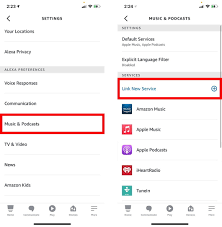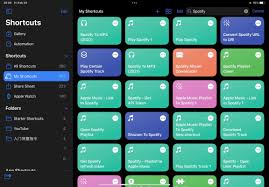Spotify’s rise as one of the leading music streaming platforms owes much to its powerful AI-driven playlist algorithms. Features like Discover Weekly, Daily Mix, Release Radar, and Spotify Blend rely on sophisticated machine learning techniques to tailor music recommendations uniquely for each listener.
If you’ve ever wondered how Spotify’s AI playlist algorithms work, this guide breaks down the technology behind the scenes, explains the key factors influencing your personalized playlists, and shows how you can leverage this understanding to get the most out of Spotify’s recommendations.

What Are Spotify’s AI Playlist Algorithms?
Spotify’s AI playlist algorithms are a collection of machine learning models and data-processing systems that analyze users’ listening habits, preferences, and social data to generate personalized playlists automatically.
Unlike static playlists curated by humans, AI playlists evolve dynamically based on your music consumption patterns, ensuring fresh and relevant recommendations every time.
Key Components of Spotify’s AI Playlist Algorithms
1. Collaborative Filtering
Collaborative filtering identifies patterns by comparing your listening habits with those of similar users.
If many users who listen to your favorite artist also like a particular new artist, Spotify recommends that new artist to you.
This method leverages vast amounts of user data to find hidden connections between listeners and tracks.
2. Natural Language Processing (NLP)
Spotify analyzes metadata, song descriptions, blogs, and articles related to music using NLP.
This helps categorize songs based on lyrical themes, moods, and genres.
It also helps in recommending songs with similar lyrical or contextual elements.
3. Audio Analysis
Spotify performs deep audio feature analysis on tracks, including tempo, key, loudness, danceability, and more.
This data helps the AI recommend songs with similar sonic characteristics to those you enjoy.
It enables playlist coherence even for songs from vastly different artists.
4. Contextual Signals
Spotify’s AI considers contextual data such as:
Time of day and day of the week (e.g., workout playlists in the morning).
Device type (mobile, desktop, smart speakers).
Location data (when permitted).
Listening session behavior (skips, repeats, saves).
These signals refine recommendations to fit your current situation.
How Does Spotify Use These Algorithms in Popular Playlists?
Discover Weekly
Updated every Monday, it uses collaborative filtering and audio analysis to find new songs you haven’t heard but are likely to enjoy.
It mixes familiar artists with emerging tracks based on your and similar users’ patterns.
Daily Mix
Several playlists that focus on specific genres or moods you frequently listen to.
Combines your favorite tracks with fresh recommendations for daily variety.
Release Radar
Updates every Friday with new releases from artists you follow or similar ones.
Combines social data and listening habits to prioritize relevance.
Spotify Blend
Merges listening habits of two or more users using collaborative filtering and AI to produce a combined playlist.
Continuously updated as participants’ tastes evolve.
Tips to Optimize Your Spotify AI Playlist Experience
Listen actively: Play, skip, and like songs regularly to provide meaningful data.
Follow artists and playlists: Signals your interests beyond just plays.
Use Spotify across devices: Gives more context to AI algorithms.
Create and update playlists: Shows your curated taste preferences.
Avoid passive listening: Skipping or liking tracks refines recommendations.
FAQs About Spotify AI Playlist Algorithms
Q: Does Spotify share my listening data with third parties?
A: Spotify uses data internally for recommendations but adheres to strict privacy policies.
Q: Can I influence my Discover Weekly playlist?
A: Yes, your listening activity and likes directly impact what Spotify recommends.
Q: How often does Spotify update its AI algorithms?
A: Spotify continuously improves its models; major updates happen periodically but are not always publicly disclosed.
Conclusion
Spotify’s AI playlist algorithms represent a sophisticated blend of collaborative filtering, audio analysis, NLP, and contextual data, all working seamlessly to deliver personalized music experiences. By understanding how these algorithms function, you can engage with Spotify more effectively and enjoy playlists that truly resonate with your unique musical taste.
Stay active, explore new music, and leverage Spotify’s AI to transform your listening journey.
Learn more about AI MUSIC








